Amid rising Islamophobia, madrasas are at crossroads — infamously labelled as ‘dens of terrorism’ where the youth are misguided, motivated and recruited to resort to anti-Indian activities’. It is little known that in the golden past, madrasas schooled reformers and personalities such as Rajendra Prasad, Raja Rammohun Roy and many other noteworthy scholars. Through bonafide stories of products of madrasas, the authors of a new book narrate the decline of the madrasas from being centres of excellence to institutions of restricted learning with dark clouds of stigma surrounding them. This excerpt from Madrasas in the Age of Islamophobia_, written by Ziya Us Salam and Mohammad Aslam Parvaiz, has been reproduced with permission from the publisher, SAGE Select._ *** Terrorism in the true sense of the word is an aggressive act against innocent persons, without legitimacy. The aim is to frighten them. Acts of similar type may be committed by individual, group, nation or the country that may be classified as terrorist activity, if the aim is to terrorise the common person or the opponent for achieving certain ends. That type of terrorism has no place in Islamic Shariah. The Holy Quran makes it explicit that killing an innocent person is equivalent to killing the whole of humankind. A verse in Surah Maidah states,
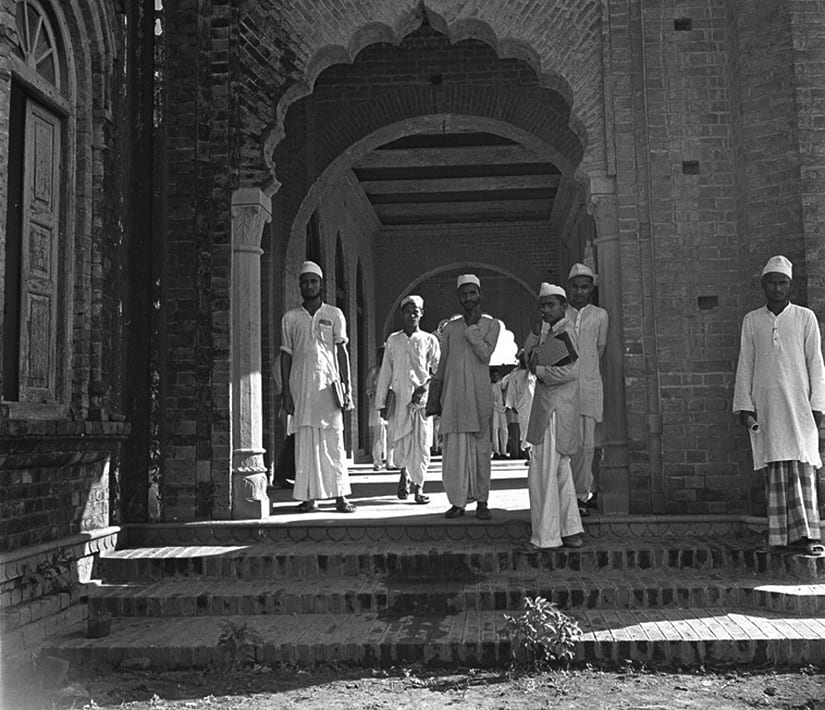 Students coming out of the seminary after classes.[/caption] Though technically a madrasa, Deoband was supposed to give the community its identity back, and help in the restoration of its lost pride. In fact, Maulana Mahmood Hasan, the first student here, never ever considered it just a madrasa. Once, he is reported to have said, ‘Did Maulana (Nanautavi) build this madrasa just to learn and teach? The madrasa was established before my eyes. As I know the institution was established after the defeat of 1857 to prepare some people to recover the loss of 1857.’ Interestingly, the first teacher of Deoband as also the first student, were both called Mahmood, the former being called Mullah Mahmood, the latter answering to Mahmood Hasan. [caption id=“attachment_7770091” align=“alignnone” width=“825”]
Students coming out of the seminary after classes.[/caption] Though technically a madrasa, Deoband was supposed to give the community its identity back, and help in the restoration of its lost pride. In fact, Maulana Mahmood Hasan, the first student here, never ever considered it just a madrasa. Once, he is reported to have said, ‘Did Maulana (Nanautavi) build this madrasa just to learn and teach? The madrasa was established before my eyes. As I know the institution was established after the defeat of 1857 to prepare some people to recover the loss of 1857.’ Interestingly, the first teacher of Deoband as also the first student, were both called Mahmood, the former being called Mullah Mahmood, the latter answering to Mahmood Hasan. [caption id=“attachment_7770091” align=“alignnone” width=“825”]
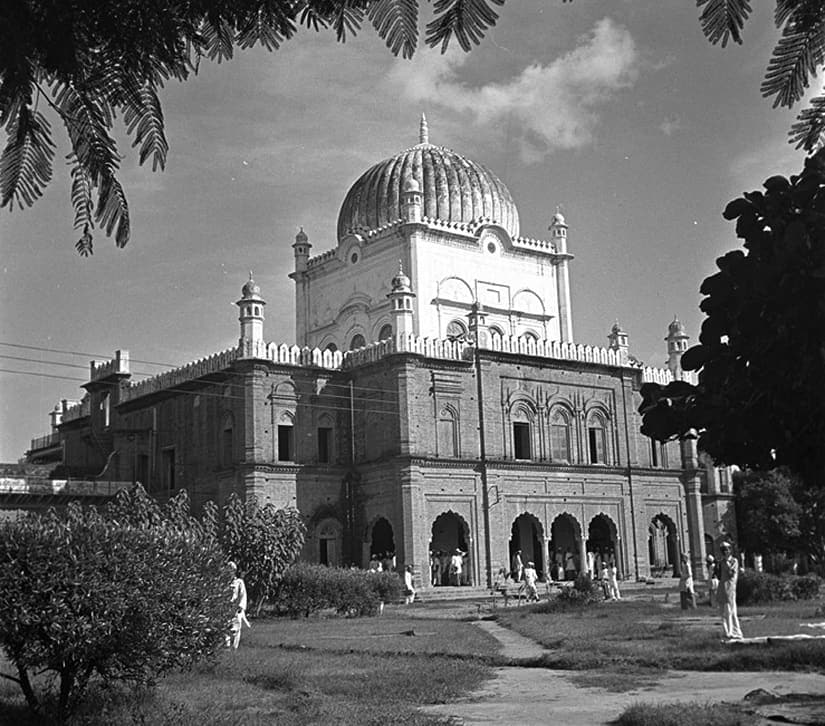 A view of the historic building.[/caption] Incidentally, the Deoband seminary was set up not only to provide quality religious education, but also as a counter to Lord Macaulay’s education system. As Mufti Shafi Usman is quoted by Muhammadullah Khalili Qasmi in Madrasa Education (Manak),
A view of the historic building.[/caption] Incidentally, the Deoband seminary was set up not only to provide quality religious education, but also as a counter to Lord Macaulay’s education system. As Mufti Shafi Usman is quoted by Muhammadullah Khalili Qasmi in Madrasa Education (Manak),
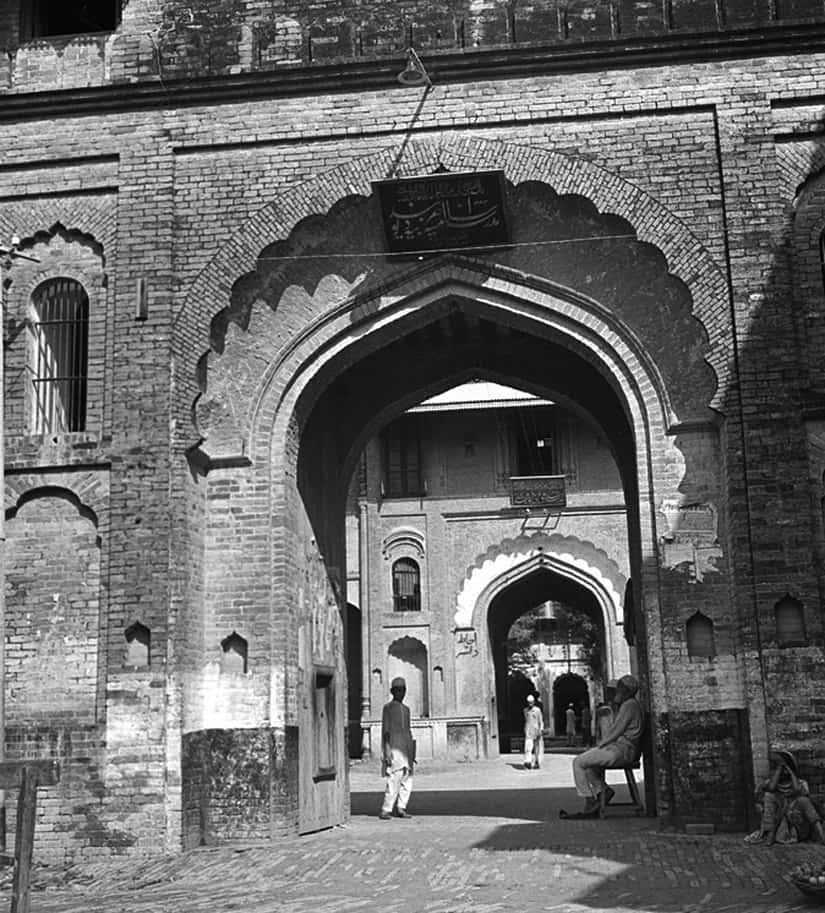 A niche of history: Darul Uloom, Deoband in 1950.[/caption] Nanautavi’s views of Deoband being a role model for other small madrasas proved correct. Today, thousands of madrasas across India follow the Deoband model. Incidentally, the site was chosen because Maulana Rafiuddin saw the Kabah in the garden of Deoband in a dream. It was this dream which inspired Nanautavi to start Darul Uloom in Deoband. The madrasa started in interesting circumstances. It was Friday, 30 May 1857, when the madrasa was founded under a pomegranate tree in Masjid-e-Chatta. Maulana Mahmood Hasan was the first student, and Mullah Mehmood the first teacher. Then it became an institution some nine years later. The new institution chose to follow the Dars-i- Nizami pattern with a few alterations. While it concentrated on the Quran and Hadith, certain time-worn books, like those on Aristotelian philosophy and logic, were cast aside. And a few secular ones added by and by. But at its core, the Deobandi mode of education concentrated on transmitted sciences and fiqh. Unfortunately, the animosity of the British towards the Muslims, and their patronage of rational sciences meant Deoband scholars had to tread with caution in the world of science. As Deobandis opposed the British, it also meant a silent opposition to matters of science. This theory of enemy’s friend (science) being an enemy was to cost the community dear. What if the alims could distinguish between being opponents of the British, not necessarily all their knowledge? What if Deoband had followed matters of science and technology, mathematics and computers, English and Hindi with the same zest it exhibited in training scholars of Islam? And had spoken out as vehemently about the association of terrorism with Islam? [caption id=“attachment_7770151” align=“alignnone” width=“825”]
A niche of history: Darul Uloom, Deoband in 1950.[/caption] Nanautavi’s views of Deoband being a role model for other small madrasas proved correct. Today, thousands of madrasas across India follow the Deoband model. Incidentally, the site was chosen because Maulana Rafiuddin saw the Kabah in the garden of Deoband in a dream. It was this dream which inspired Nanautavi to start Darul Uloom in Deoband. The madrasa started in interesting circumstances. It was Friday, 30 May 1857, when the madrasa was founded under a pomegranate tree in Masjid-e-Chatta. Maulana Mahmood Hasan was the first student, and Mullah Mehmood the first teacher. Then it became an institution some nine years later. The new institution chose to follow the Dars-i- Nizami pattern with a few alterations. While it concentrated on the Quran and Hadith, certain time-worn books, like those on Aristotelian philosophy and logic, were cast aside. And a few secular ones added by and by. But at its core, the Deobandi mode of education concentrated on transmitted sciences and fiqh. Unfortunately, the animosity of the British towards the Muslims, and their patronage of rational sciences meant Deoband scholars had to tread with caution in the world of science. As Deobandis opposed the British, it also meant a silent opposition to matters of science. This theory of enemy’s friend (science) being an enemy was to cost the community dear. What if the alims could distinguish between being opponents of the British, not necessarily all their knowledge? What if Deoband had followed matters of science and technology, mathematics and computers, English and Hindi with the same zest it exhibited in training scholars of Islam? And had spoken out as vehemently about the association of terrorism with Islam? [caption id=“attachment_7770151” align=“alignnone” width=“825”]
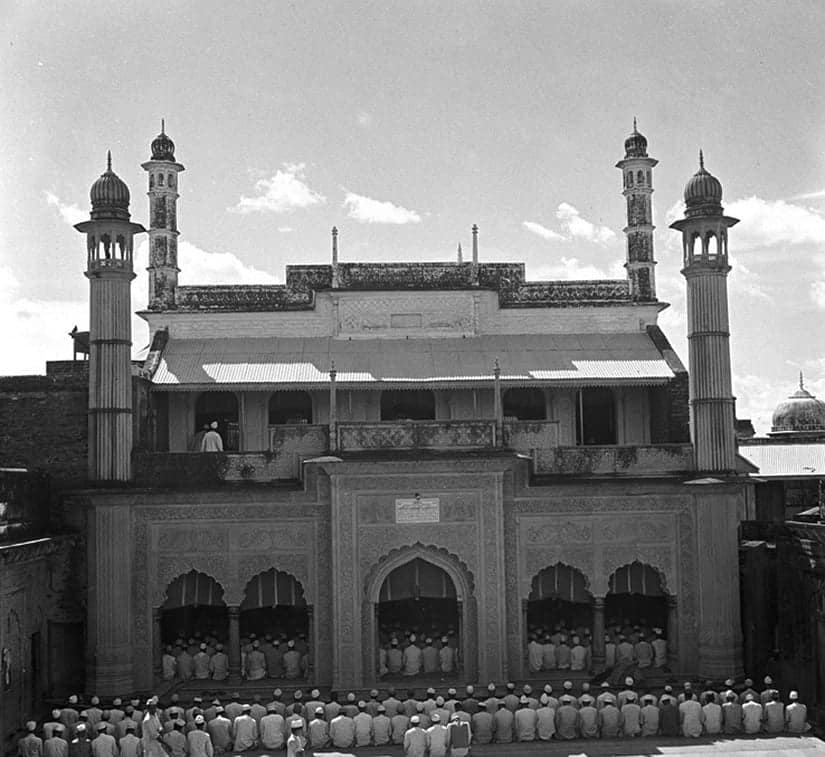 A prayer in progress.[/caption] *** — All images and quotes courtesy SAGE Select — Madrasas in the Age of Islamophobia is written by Ziya Us Salam (Associate Editor, Frontline) and Mohammad Aslam Parvaiz (Maulana Azad National Urdu University, Hyderabad) | 2019 | 208 pages | Paperback: Rs 395 (9789353289294) | SAGE Select
A prayer in progress.[/caption] *** — All images and quotes courtesy SAGE Select — Madrasas in the Age of Islamophobia is written by Ziya Us Salam (Associate Editor, Frontline) and Mohammad Aslam Parvaiz (Maulana Azad National Urdu University, Hyderabad) | 2019 | 208 pages | Paperback: Rs 395 (9789353289294) | SAGE Select
Madrasas in India: How 1857, British crackdown on Muslims led to founding of pioneering Darul Uloom Deoband
Ziya Us Salam and Mohammad Aslam Parvaiz
• December 26, 2019, 13:03:35 IST
Through bonafide stories of products of madrasas, the authors of a new book narrate the decline of the madrasas from being centres of excellence to institutions of restricted learning with dark clouds of stigma surrounding them.
Advertisement
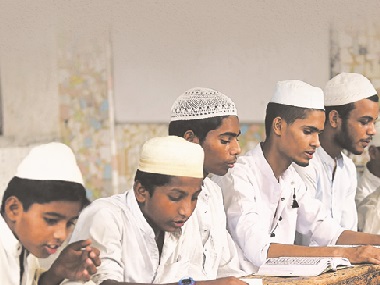)
The failure of the First War of Independence in 1857 had a devastating impact. While the country lost an opportunity to throw off the imperial yoke, the Muslim community, in particular, had to bear the brunt of the British excesses. Hundreds of Islamic clerics were executed, scores of mosques were defiled and madrasas unceremoniously shut down. Clearly, the British regarded Muslims as their arch enemies. The attack on a masjid or a madrasa was as much an attack on India as a community’s symbols of pride. While a historic mosque like Fatehpuri Masjid in Delhi lapsed into the hands of a local trader, the Jama Masjid and Ghata Masjid fell into the hands of the imperial forces. Their horses were anchored here, a bakery flourished too. During the war, some of the ulemas had waged an open struggle against the British. Thana Bhavan, in modern Uttar Pradesh, was the site of rebellion against the British. The Islamic clerics took on the British in huge numbers here. Noted scholar Farhat Tabassum referred to their contribution in the book Deoband Ulema’s Movement for the Freedom of India (Manak),
The British, inevitably, did not take it lying down. The British forces surrounded Thana Bhavan. Also, reports came in that they had laid siege to Shamli, and the revolutionaries rushed there. Hiding in a mosque, they attacked the British forces. It was in this battle that Maulana Qasim Nanautavi played a prominent role. With him were the likes of Maulana Imam Rabbani, Maulana Rashid Ahmed and Maulana Hafeez, later to be involved in the dissemination of education among the faithful. They fought the British army tooth and nail in Shamli. Haji Imdadullah was the commander-in-chief of the rebel forces. Maulana Mohammed Qasim Nanautawi, Maulana Rasheed Ahmad Gangohi and Hafiz Zamin Shaheed acted as wing commanders. The British quelled the rebellion with a heavy hand. Imdadullah escaped to Makkah. Zamin Shaheed was martyred, Gangohi was captured, put on trial and later freed. Nanautavi went into hiding. He came back a few years later to spearhead the movement for the foundation of Darul Uloom Deoband, an institution that would prepare scholars to guide the community. It came about at a time when any surviving madrasa could no longer hope for imperial grants, as was the case during the time of the Mughals. With the community living in a state of fear and rising economic challenges, the odds were stacked up against madrasas. They had to find ways to sustain themselves, or rely on a handful of community members who might still have disposable resources. At this time, Maulana Nanautavi led the movement for the revival of pristine Islam. The idea was to make every Muslim well versed with the Quran and Hadith, thereby empowering him. He wanted the younger generation to know Islam well before going on to learn secular subjects. With this aim in mind, he reduced the period of study at a madrasa from 10 to 6 years. Thus, a boy who joined before the age of 9-10, could hope to be an alim by the age of 15, and then proceed for secular learning. This, however, was the first step towards bifurcation of education in modern India. [caption id=“attachment_7770031” align=“alignnone” width=“825”]
Thus a self-financed seminary Darul Uloom, Deoband came into existence in 1866, and a community licking its wounds post-1857 took recourse to faith to move ahead. The past was all about imperial patronage. The future was going to be about building private institutions with personal money. And madrasas had to depend on private donations to meet their expenses. Realising the possibility of Deoband spawning off other madrasas, Nanautavi laid down eight principles for the new seminary: The madrasa men should look for ways to increase donation, provide food to students so that they do not leave to earn a living, the interests of the madrasa should be paramount and the rector should consult the advisory board on key issues, the madrasa teachers should not nurse a big ego, teaching material provided for the year should be completed, the madrasas should be careful about the donors, and their source of income, the share of the government and the rich seems dangerous, and the donations of those who do not wish name and fame are blissful. [caption id=“attachment_7770141” align=“alignnone” width=“825”]
End of Article